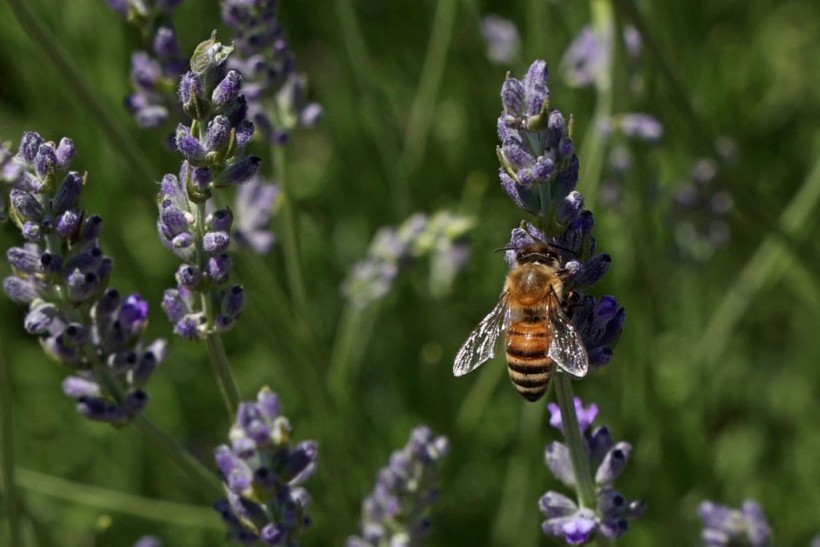Researchers studying the bee colonies found something unique about the honeybees' waggled dances. The new report discovered that the species' antennae allow them to decode the said dances.
Honeybees are important to the environment and ecosystems, being one of the greatest pollinators. Bees are helpful to biodiversity and provide quality food for communities and other species. With pollinators, they can maintain food security.
However, a recent report warns of a potential decline in the bee population due to air pollution, habitat loss, and pesticides. Human disturbance has significantly impacted bee numbers. In addition to said threats, the decline in bees is associated with climate change, pathogens, pests, colony collapse, and poor nutrition.
Honeybees Antennae and Waggle Dances

(Photo : by CHRISTINA ASSI/AFP via Getty Images). Honeybees play a crucial role in pollination and food security. However, pesticide use and climate change are pressing threats to their population. In the new report, researchers discovered that the species antennae help to decode information to food through waggle dances.
In a report by the University of Edinburgh, researchers observed the role of bee antennae in decoding the unique waggled dances. Understanding the bee population is important for conservation and mitigation efforts amidst the issues of pesticide use and habitat loss.
"Understanding how the small brains of insects carry out such sophisticated calculations can help us design more compact and energy-efficient computers," Professor Barbara Webb of the School of Informatics, said, as quoted in a report.
The research report was published in Current Biology. With the high-speed and high-resolution video, researchers discovered the role of antennal position in the dancer and follower bees.
Amazingly, the study uncovers that unique neural mechanism in integrating and transmitting information to other bees. The research findings show how the bee brain can potentially decode the dance language or waggle dance.
"This is particularly exciting because it unveils a remarkably elegant neural mechanism employed by bees to decipher complex information with minimal resources," Anna Hadjitofi of the School of Informatics said in the same report.
The findings reveal that nestmates followed the dancers based on the changing positions, with bees can change position based on their antennae. The researchers explained that bees have ways to decipher the waggle dances.
Also Read: New Camera System Allows To See Exceptional Animal Colors in Wildlife
Impact of Climate Change on Bee Honey Production
In the recent NWN report, climate change poses a significant threat to bee honey production. It can cause extreme weather events and alter rainfall patterns that can impact bees, as honey yields declined in the US since the 1990s.
The researchers explained that soil productivity and climatic conditions are important factors in successful yields of honey. The anomalies in weather events can affect the honey, which is exacerbated by climate change and warmer temperatures.
According to the report, the researchers studied the data on honey yield, climate anomalies, and soil productivity. As honey is an important source of livelihood, bee farms will suffer from low yields.
Related Article: Changing Climate, Rising Temperature Can Cause Decline In Bees' Honey Production, Study Finds
For more similar, don't forget to follow Nature World News.
© 2024 NatureWorldNews.com All rights reserved. Do not reproduce without permission.





